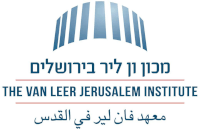When the Joint List was created out of the four parties that comprise it before the elections for the 20th Knesset in March 2015, the purpose was to guarantee the parties’ admission to the Knesset after the voting threshold was raised from 2% to 3.25%. The raising of the threshold threatened the ability of these parties, or at least some of them, to get into the Knesset. It has been five years since the Joint List was formed. During that time there have been four election cycles, in three of which it competed as a single list (in April 2019, in the elections for the 21st Knesset, it split into two lists). In this short article I will not discuss the circumstances of the list’s creation or the array of political, party and personal interests behind them, nor its performance in and out of the Knesset, nor social issues and developments in Palestinian party politics within Israel. I would like to focus here on the last two election cycles – September 2019 and March 2020, after the four parties went back to running as a single list – and examine the changes in the Joint List’s discourse, its role, and its functioning, to try to understand the developments in the relationship between the Palestinian citizens of Israel and the state, and its policy towards them. Furthermore, we must also look at the internal discussion between parts of the Palestinian people, about their national identity, their status, and their citizenship in the Jewish state, and examine the relationship with the state and with its Jewish majority of citizens.
This introduction requires us to ask questions that will spark a political, intellectual and theoretical effort regarding the knowledge of oppressed and occupied people and their struggle, organization and action in the shadow of excluding colonialist regimes. How must we interpret the Joint List’s “influence discourse,” about influencing the political system from within and influencing the Jewish majority in the broader sense? Can a people that is a “minority” (an indigenous minority in this case) really build an influential political force in a state that defines itself in a racist and excluding manner towards anyone who is not Jewish? Is it really the role of the minority towards the majority and towards the regime that treats it with racism, through a planned and systemic array of laws and legislation? In the same vein, how can the civil rights discourse be deconstructed in the Jewish state and what are the boundaries of citizenship for those who are not Jewish? Does the Joint List really express the “will of the people,” as its slogan says and as its members reiterate? What is the will of that people and what are its real interests? Who decides what those interests are, who represents them, and how?
My first proposal here, which might help reach answers at a later stage, is that the Joint List presents its very existence as an achievement – because, after all, it is performing joint political action between opposing political, partisan, and ideological elements, and by doing so numerically increases the representation of the Palestinian citizens in the Knesset. But it is deluding itself and the public when it argues that it has the ability to influence and expand the boundaries of the citizenship of the Palestinian citizens of the Jewish state.

To support this argument we must analyze the Joint List’s approach, its political and social slogans, and the performance of its delegates and leaders in campaigns during elections and after them, on the media and political stages in the intra-Palestinian social sphere – i.e., the Palestinian community and its voting public – as well as in the Israeli sphere outside of it, and by that I mean Israeli society and the Israeli parties. The Joint List has moved from tactics I call “realpolitik” – an alliance based on joint interests and maintenance of the continuity of the parties that comprise it and the parliamentary representation of the Palestinian citizens in the Knesset – to a new tactic of the “influence discourse,” which is concerned with political influence by toppling the right-wing regime and preventing its staying in power, a tactic it adopted in the September 2019 and March 2020 elections. The Joint List set out for itself the role of reviving the Israeli left and sought to lead it, to protect Israeli democracy and prevent the spread of fascism; and meanwhile it created a new discourse with two main elements. The first element is the matter of influence and change: influence over official Israeli politics, and a change in the direction led by the right and the extreme right headed by Benjamin Netanyahu. The Joint List’s election slogans in the last two election cycles focused on toppling Netanyahu and defeating the right, and in the elections for the 23rd Knesset – after the US declared the “Deal of the Century” – it also focused on toppling the deal. To justify those slogans, the Joint List emphasized that in order to realize those goals it must increase its representation in the Knesset. The second element in the discourse is the Palestinian citizens of Israel, namely the public of voters and supporters that the Joint List seeks to represent. Here Israeli civil identity and civil rights are emphasized in their narrow sense – “realistic” demands for services and budget allocation – and they are prioritized above national, personal and collective identity.
In reality, these goals and promises were not realized even after the Joint List won 15 seats in the March 2020 elections. Thus, its influence over the political array in Israel, its ability to change it or expand participation in it, are nothing but an illusion. Representation did grow numerically, but it did not increase the list’s actual weight. Even though the Joint List recommended Blue and White leader Benny Ganz to be prime minister, what happened after the elections in the negotiations to form a government, and the alliance between Ganz and Netanyahu, leading to the establishment of a national emergency government – clearly draws the boundaries of the political role that the Jewish state is willing to allow its Palestinian citizens and their delegates to its parliament.
Furthermore, from the intra-Palestinian perspective there is another risk in glorifying the role of the Joint List by its components and members, at the expense of national bodies led by the High Follow-Up Committee for Arab Citizens of Israel, and political movements that do not aspire to enter the parliament, such as Abnaa el-Balad and other movements (more or less organized), which boycott the elections. There is a danger that these political forces and their opinions will be excluded, and that political movement will be limited to the path of the Joint List, which goes through the Israeli political system and parliamentary representation – despite its limitation and uniqueness in Israel. In this context we must remember that the Joint List is an election list; it is not a political party with a clear history and ideology, institutions and social basis, but a hybrid body that might dissolve – because of the limits of its joint discourse, because of the modes of action and decision-making of its different elements, and because of internal ideological, partisan, personal, and organizational differences. The Joint List actually represents those who gave it their vote in a very specific political and temporal context; it can no longer claim to represent a unifying and successful national project.
















